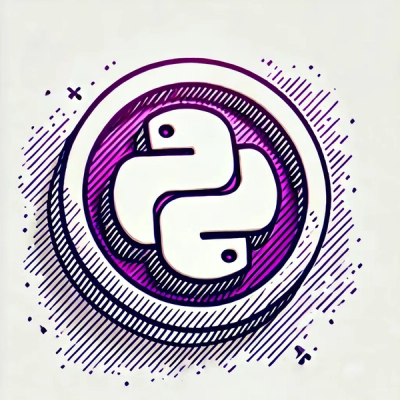
Research
PyPI Package Disguised as Instagram Growth Tool Harvests User Credentials
A deceptive PyPI package posing as an Instagram growth tool collects user credentials and sends them to third-party bot services.
capture-website-cli
Advanced tools
Capture screenshots of websites from the command-line
It uses Puppeteer (Chrome) under the hood.
npm install --global capture-website-cli
Note to Linux users: If you get a "No usable sandbox!" error, you need to enable system sandboxing.
$ capture-website --help
Usage
$ capture-website <url|file>
$ echo "<h1>Unicorn</h1>" | capture-website
Options
--output Image file path (writes it to stdout if omitted)
--width Page width [default: 1280]
--height Page height [default: 800]
--type Image type: png|jpeg|webp [default: png]
--quality Image quality: 0...1 (Only for JPEG and WebP) [default: 1]
--scale-factor Scale the webpage `n` times [default: 2]
--list-devices Output a list of supported devices to emulate
--emulate-device Capture as if it were captured on the given device
--full-page Capture the full scrollable page, not just the viewport
--no-default-background Make the default background transparent
--timeout Seconds before giving up trying to load the page. Specify `0` to disable. [default: 60]
--delay Seconds to wait after the page finished loading before capturing the screenshot [default: 0]
--wait-for-element Wait for a DOM element matching the CSS selector to appear in the page and to be visible before capturing the screenshot
--element Capture the DOM element matching the CSS selector. It will wait for the element to appear in the page and to be visible.
--hide-elements Hide DOM elements matching the CSS selector (Can be set multiple times)
--remove-elements Remove DOM elements matching the CSS selector (Can be set multiple times)
--click-element Click the DOM element matching the CSS selector
--scroll-to-element Scroll to the DOM element matching the CSS selector
--disable-animations Disable CSS animations and transitions [default: false]
--no-javascript Disable JavaScript execution (does not affect --module/--script)
--module Inject a JavaScript module into the page. Can be inline code, absolute URL, and local file path with `.js` extension. (Can be set multiple times)
--script Same as `--module`, but instead injects the code as a classic script
--style Inject CSS styles into the page. Can be inline code, absolute URL, and local file path with `.css` extension. (Can be set multiple times)
--header Set a custom HTTP header (Can be set multiple times)
--user-agent Set the user agent
--cookie Set a cookie (Can be set multiple times)
--authentication Credentials for HTTP authentication
--debug Show the browser window to see what it's doing
--dark-mode Emulate preference of dark color scheme
--launch-options Puppeteer launch options as JSON
--overwrite Overwrite the destination file if it exists
--inset Inset the screenshot relative to the viewport or \`--element\`. Accepts a number or four comma-separated numbers for top, right, left, and bottom.
--clip Position and size in the website (clipping region). Accepts comma-separated numbers for x, y, width, and height.
--no-block-ads Disable ad blocking
Examples
$ capture-website https://sindresorhus.com --output=screenshot.png
$ capture-website index.html --output=screenshot.png
$ echo "<h1>Unicorn</h1>" | capture-website --output=screenshot.png
$ capture-website https://sindresorhus.com | open -f -a Preview
Flag examples
--width=1000
--height=600
--type=jpeg
--quality=0.5
--scale-factor=3
--emulate-device="iPhone X"
--timeout=80
--delay=10
--wait-for-element="#header"
--element=".main-content"
--hide-elements=".sidebar"
--remove-elements="img.ad"
--click-element="button"
--scroll-to-element="#map"
--disable-animations
--no-javascript
--module=https://sindresorhus.com/remote-file.js
--module=local-file.js
--module="document.body.style.backgroundColor = 'red'"
--header="x-powered-by: capture-website-cli"
--user-agent="I love unicorns"
--cookie="id=unicorn; Expires=Wed, 21 Oct 2018 07:28:00 GMT;"
--authentication="username:password"
--launch-options='{"headless": false}'
--dark-mode
--inset=10,15,-10,15
--inset=30
--clip=10,30,300,1024
--no-block-ads
Lets say you have a file named urls.txt with:
https://sindresorhus.com
https://github.com
You can run this:
filename='urls.txt'
while read url; do
capture-website "$url" --output "screenshot-$(echo "$url" | sed -e 's/[^A-Za-z0-9._-]//g').png"
done < "$filename"
FAQs
Capture screenshots of websites from the command-line
The npm package capture-website-cli receives a total of 493 weekly downloads. As such, capture-website-cli popularity was classified as not popular.
We found that capture-website-cli demonstrated a not healthy version release cadence and project activity because the last version was released a year ago. It has 1 open source maintainer collaborating on the project.
Did you know?

Socket for GitHub automatically highlights issues in each pull request and monitors the health of all your open source dependencies. Discover the contents of your packages and block harmful activity before you install or update your dependencies.

Research
A deceptive PyPI package posing as an Instagram growth tool collects user credentials and sends them to third-party bot services.

Product
Socket now supports pylock.toml, enabling secure, reproducible Python builds with advanced scanning and full alignment with PEP 751's new standard.

Security News
Research
Socket uncovered two npm packages that register hidden HTTP endpoints to delete all files on command.